How a Group of Tourists Survived a Devastating Avalanche in the Italian Alps
Forty people gathered at a hotel high in the Italian Alps. Then came the earthquake, the devastating avalanche—and the race to find survivors.
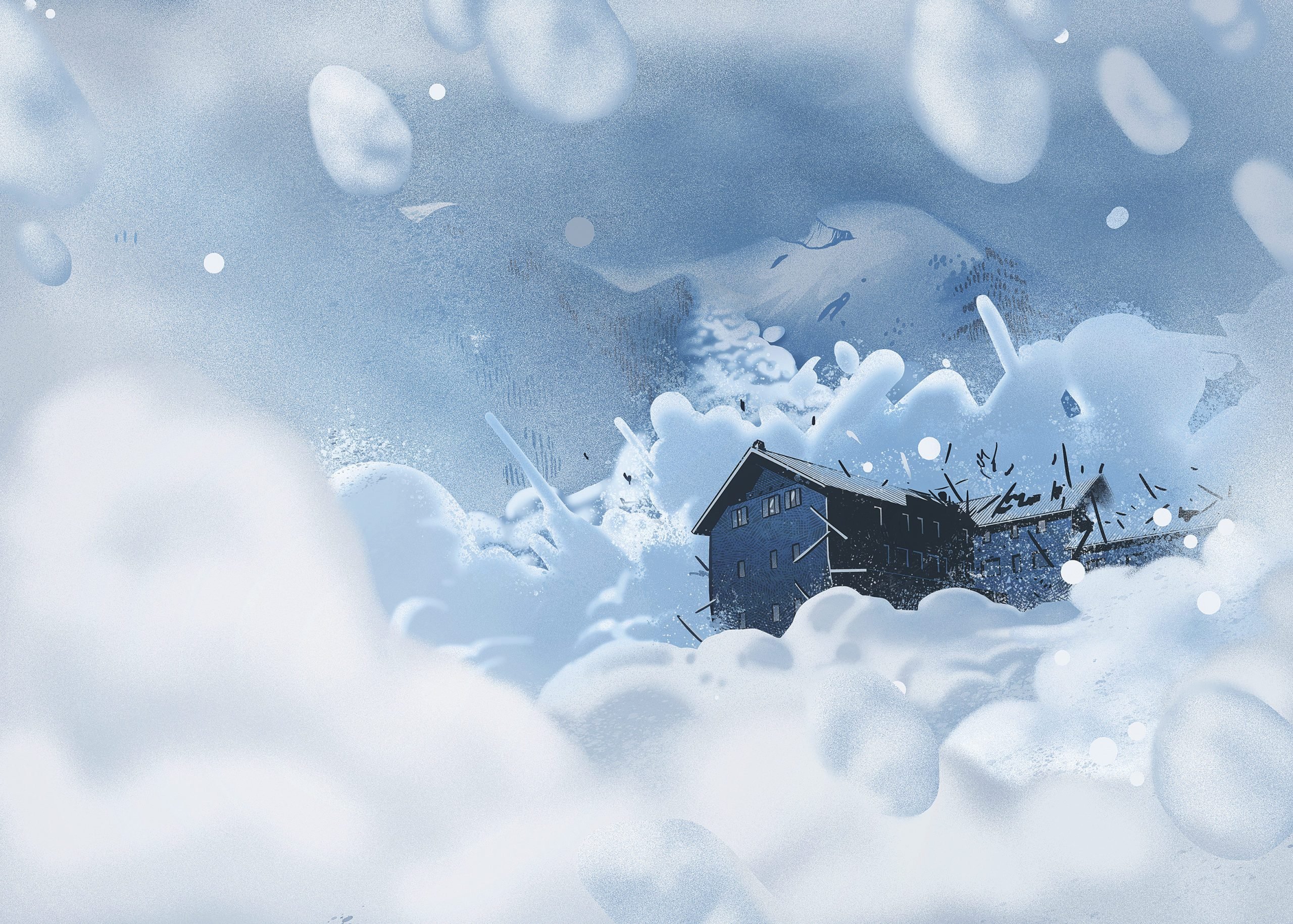
Under the Mountain
He was pinned in the darkness by the weight of beams and walls, ice and earth. What happened? Where am I?
Lying on his stomach, he surveyed what he could. His left leg had been twisted and thrust forward so that his foot rested near his cheek. He could move his left arm, but his right arm and leg were crushed beneath something enormous. He realized with horror that his chin rested on the knee of a corpse. He tried to still the panic, to recall the moments before everything went dark.
He had been speaking to his wife. They were standing in a doorway. And then, the whistling gust of wind; the sense of tumbling through space; the sounds of coughing, moaning; and the horrifying silence that followed. Had it been an earthquake? He called to his wife but heard no answer.
“Giampaolo? Giampaolo?” a woman cried. She was close, and she was trapped here, too. “Are you alive?”
“I’m alive!” he shouted. “I’m alive.”
Nestled on the flanks of Italy’s Apennine Mountains, about 160 kilometres northeast of Rome, the Hotel Rigopiano had never been easy to reach. But its isolation only added to its appeal, attracting Italian pop stars and celebrities like George Clooney.
In January 2017, snow began to fall across the Apennines. For days it came down, and the enormous drifts ringing the Rigopiano grew taller by the hour.
From his home in the Rome suburbs, Giampaolo Matrone watched the weather with growing concern. He and his wife, Valentina Cicioni, had planned an overnight getaway to the hotel, but now he wondered whether they should go. Matrone phoned the Rigopiano. Its owner, Roberto Del Rosso, said Matrone simply needed chains on his tires. “Tranquillo,” Del Rosso said. “It won’t be a problem.”
What Del Rosso kept to himself was that things were growing bleak. Food and supplies at his hotel were running low, and with only a single snowplow, officials in town were struggling to keep the road open. But Matrone and Cicioni didn’t know that. They decided to make the trip. By the time they neared the resort six hours later, they were battling a total whiteout. When they finally reached the hotel, they were cold and exhausted. They checked into their room and then headed outside to the thermal pool, trying to forget their long day in the car. The wind and the thick, wet snow were unrelenting. Soon they retreated indoors and got dressed for dinner.
The conversation there was troubling. “I’m more scared than you,” a waiter confided to them. “I’ve been stuck here for six days.”
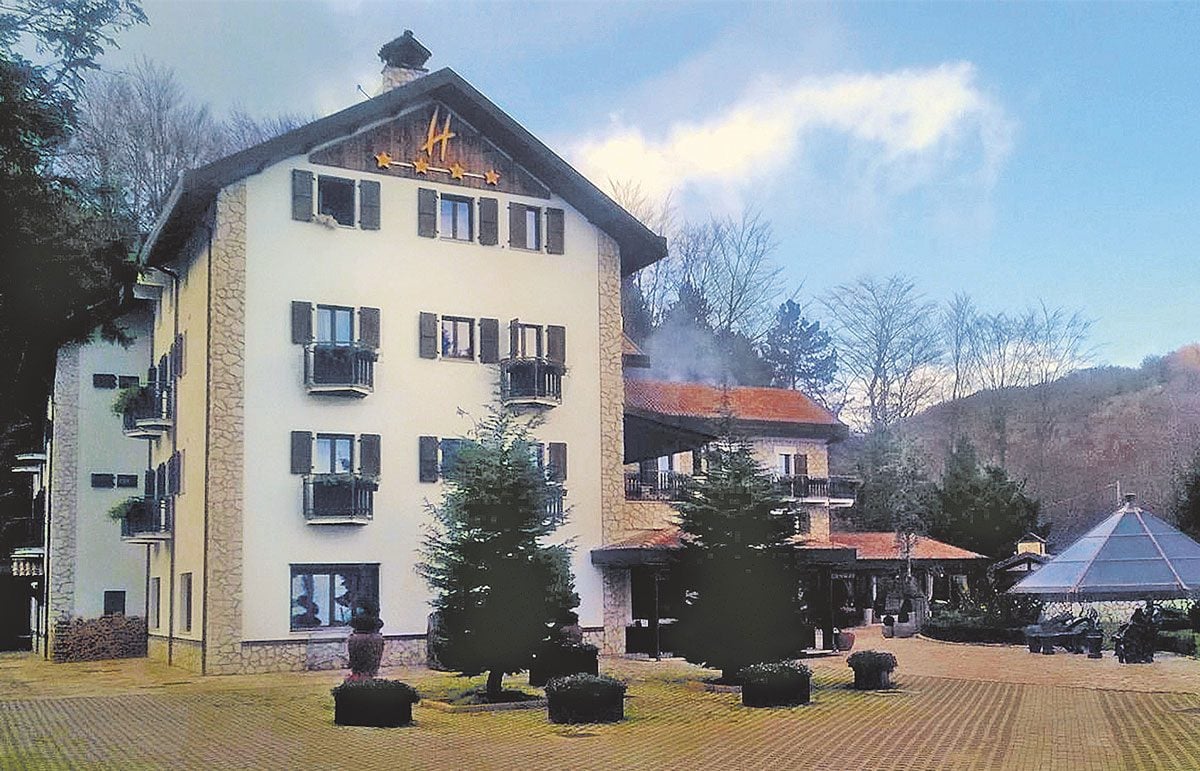
As the hotel guests awoke on Wednesday, January 18, they discovered that their predicament had worsened overnight. The cars in the lot were invisible. The phone and power lines were down. Cellular coverage, always spotty on the mountain, had gotten worse.
Employees in the kitchen were trying hard to manage what was left of the provisions. For breakfast, they put out a few microwaved croissants, some marmalade and Nutella.
After breakfast, Matrone and Cicioni went to the Jacuzzi. Matrone sank beneath the surface. Suddenly, the hotel began to wobble. The windows rattled, and the water in the tub sloshed over the edges.
An earthquake with a magnitude of 5.7 had struck the mountain. Matrone had had enough. “Let’s get out of here,” he told his wife, dressing quickly. They headed to the parking lot, where others were excavating their cars. Fifteen minutes after the first earthquake, another tremor hit, this one measuring 5.6.
With a dozen vehicles freed, guests set off down the driveway. But when they reached the main road, the path was blocked by a two-metre-high wall of snow. Matrone climbed out of his car and scaled the drift. There was no road, just a glistening expanse of powder. He turned and yelled down to his wife, “We’re trapped!” They made their way back to the resort.
As the light outside faded, the 40 guests and workers searched for distraction. Adriana Vranceanu and her son huddled over a checkerboard in a playroom on the ground floor. She needed aspirin and had sent her husband, Giampiero Parete, to find some in their car. Meanwhile, their daughter shot pool with two other children down the corridor in the billiard hall.
A handful of guests sat in white upholstered armchairs and sofas. Matrone paced the reception area, anxiously discussing options with his wife. Del Rosso, the owner, was just around the corner, in the hotel’s library nook. Half a dozen of his employees milled about in the kitchen.
This was when the snow on the mountain began to slide.
They heard the avalanche before they saw it. As the wall of snow and ice tumbled downward, it compressed the air into a terrible low whistle. The avalanche gathered speed and size, grabbing rocks and trees and anything else in its way as it roared down the mountain.
With the force of 4,000 fully loaded Mack trucks, the snow slammed into the hotel at 100 kilometres per hour. Walls buckled. The avalanche thundered through the kitchen, killing the workers there. It tore into the alcove where Del Rosso was, then raced across the two rooms where guests sat sipping hot drinks.
The snow—and the weight of everything it had brought down the mountain with it—ripped the hotel from its foundation, collapsed it into a pile of rubble, and sent debris flying more than 90 metres away. When the tossing and tumbling came to a stop, those caught inside were left buried in the icy heap of rock and ruin. All was now still; everything had gone dark.
Fabio Salzetta, the resort’s caretaker, had been working in the tiny boiler hut about 27 metres from the main building when he noticed an eerie silence. He tried to throw open the door, but it wouldn’t budge. The little outbuilding was sealed in snow. So he pried away the window frame and wriggled outside. Standing on an empty snowfield, he gazed at a trail of sheer destruction—it was as if a giant rake had been dragged down the mountain, toppling beech trees, crushing cars, chewing up everything in its path.
Salzetta felt numb. Where was the hotel?
Then he saw the tip of the Rigopiano’s roof poking out of a pyramid of ice-topped rubble. The entire building had been bulldozed down the hill.
Salzetta noticed a figure stumbling across the snow: Giampiero Parete. Moments before the avalanche had struck, he’d gone to get aspirin for his wife from their car. Parete appeared disoriented, distraught. “My family is inside the hotel,” he wailed.
The two climbed inside Parete’s car. Finding a cell signal with Parete’s phone seemed to take forever. In fact, it took two hours before they finally spoke with the chief of the region’s alpine rescue team, Antonio Crocetta.
“We’re coming,” Crocetta promised.
“How long will it take?” asked Parete.
“Five or six hours.”
Darkness had set in, and Parete and Salzetta sat afraid inside the car, the motor running, the heat now blasting.
From his base in the hillside village of Penne, Crocetta alerted the military police and mobilized his unit: 14 men trained in rescue operations, including a surgeon, an anaesthetist, a dog handler, a search dog and two veteran alpine guides. Reaching the resort would mean trekking 10 kilometres up the mountain.
When the rescuers finally arrived, eight hours after Parete had talked to Crocetta, there was no movement anywhere—no human sound, just rubble. They did spot two headlights: Salzetta and Parete in the car.
“How many people are in the hotel?” a team member asked.
“About 40,” Salzetta replied.
“Can you give us an idea of where they might be?”
Salzetta offered his best guesses. As rescuers wrapped Parete in a thermal blanket and took him down the mountain on a stretcher, other members of the alpine team began probing with tools used to poke through snow to locate bodies. They found the first one after about an hour, buried under one and a half metres of snow. It was Gabriele D’Angelo, one of Salzetta’s colleagues. The maître d’ of the hotel’s restaurant was found buried nearby. Later, Del Rosso’s body would be discovered beneath the rubble that crushed him as his hotel disintegrated.
While the alpine team probed for corpses, Giampaolo Matrone lay in a coffin-sized pocket of air beneath nine metres of snow, ice and rubble. He could hear nothing of what was happening at the surface. Shock had set in, and he felt no pain, no hunger, no cold.
He began to fade in and out of consciousness. Surreal imagery drifted through his mind. At one point, he was walking alongside his wife toward the bakery his family operated, taking note of every shop, every street corner, each crack in the pavement.
His thoughts were strange and richly detailed. He imagined rescuers swooping in on magic carpets, dressed like Aladdin in The Arabian Nights. In another vision, his best friend, a bodybuilder, materialized on the mountain, lifting tons of concrete and setting Matrone free.
Each time Matrone awoke, he confronted anew the terrible reality: he was buried alive. Despair washed over him. He asked himself, Who is going to save us?
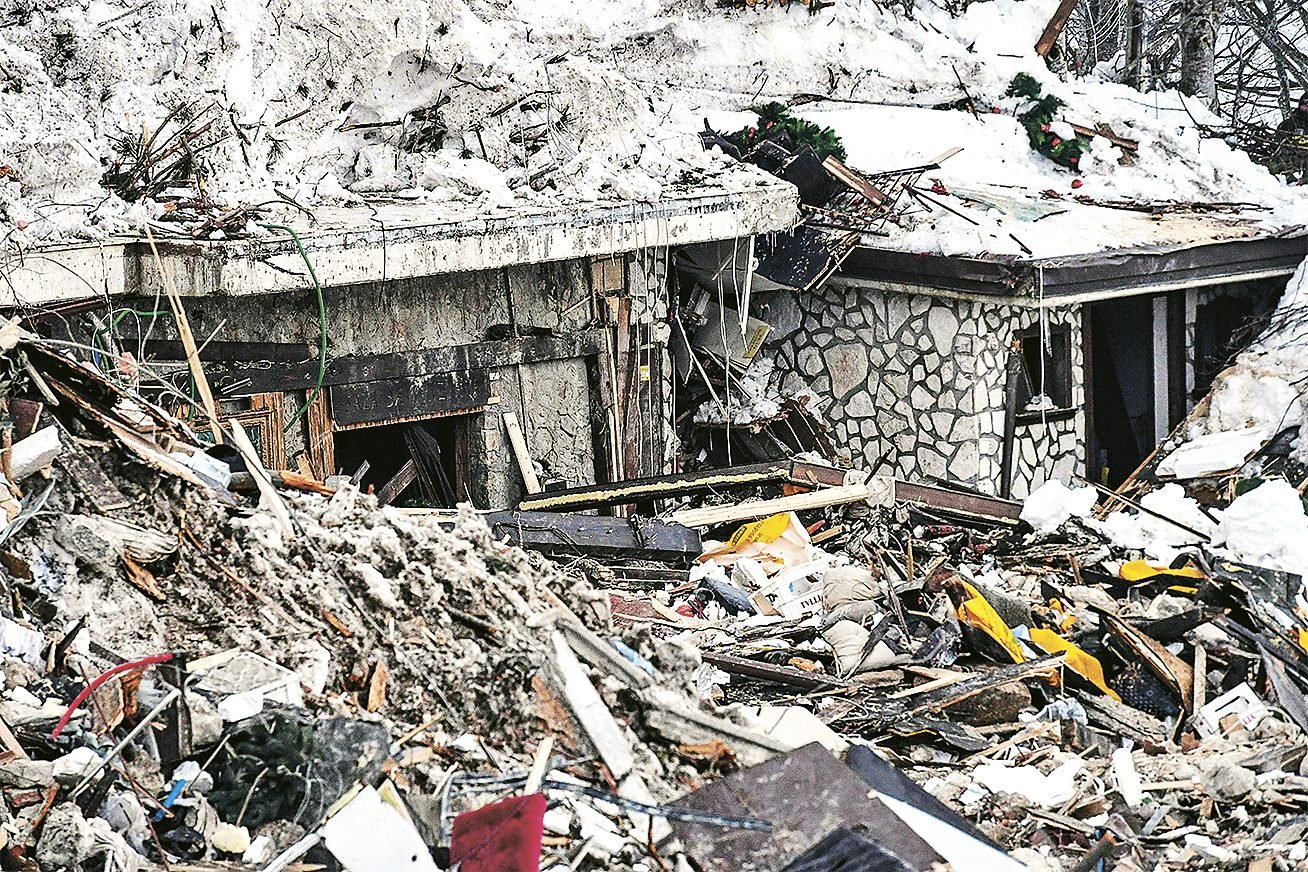
The next morning, Thursday, more rescuers arrived, including a team of firefighters and canine trainer Lorenzo Botti. Looking at the remains of the hotel, Botti made a quick assessment: no chance of survivors.
Police technicians set up an antenna that allowed them to home in on buried cellphones. Wherever there were phones, there would be people—or, more likely, bodies.
Botti turned his attention to the nine-metre mound, buried under snow, that constituted the main structure of the hotel. After studying a crude floor plan drawn by Salzetta, Botti and his men mounted the wreckage, shovelled through four metres of snow, and, when they found the top of the building, began sawing into the roof.
Rescuers carefully lowered themselves through the apertures they’d cut. Lights fastened to their helmets illuminated the twisted debris. The space was so cramped, the rescuers had to crawl on their bellies. For hours they called out for survivors.
Finally, at 11 a.m. on Friday, more than 30 hours after the search began, they heard something astonishing: a woman crying for help.
“Who are you?” one of the rescuers screamed back.
“I am Adriana.”
“How many are you?”
“I’m in a room with my son,” she said. “My daughter’s inside, in the next room.”
Adriana Vranceanu—whose husband had gone to fetch her aspirin from their car before the avalanche and then frantically phoned for help—was bleeding from a head wound when firefighters found her and her son squeezed together in a crawl space. They were led to safety.
Finding the survivors electrified the rescuers. The firefighters tunnelled quickly toward the nearby billiard room, cut a small hole in the roof, focused a searchlight, and lowered a video probe. Gathered around a screen, the team saw two small kids emerge from behind a sofa, including Adriana’s daughter, drawn by the light from the hole in the roof. Somehow, the entire room appeared intact.
Through a hole in the wall, firefighters found three more children. “Stay calm,” a rescuer said. “Get on your bellies. Make like a centipede.” Carefully but quickly, the men ushered the children out of the rubble.
Meanwhile, another squad of rescuers picked up a cellphone signal coming from a crawl space. They sawed toward voices crying for help. Soon they found a young couple and a young woman, all of whom they pulled to safety.
“Who else is down here?”
“A Roman guy,” one of them said. “Giampaolo Matrone.”
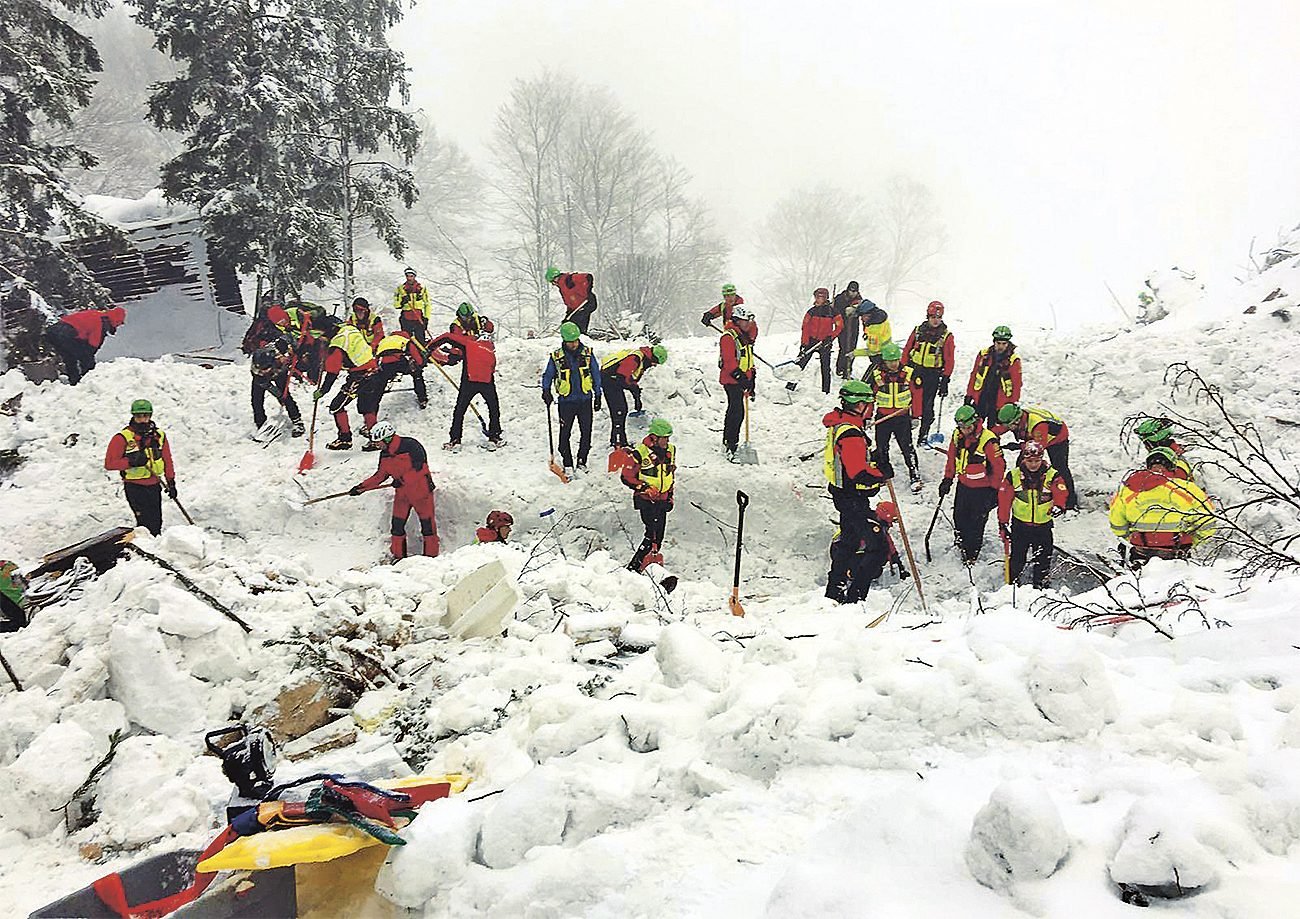
It was after midnight now, Saturday, January 21, some 55 hours since the avalanche. The rescue team had been working nonstop for more than two days. The wreckage was frighteningly unstable. As they moved, the rescuers knew that the force of their digging—or another tremor—could bring it all down upon them.
Paolo Di Quinzio and three other rescuers burrowed on, breaking blade after blade on their circular saws, battling toward a faint cell signal detected deep in the ruins. Suddenly they heard a voice. They silenced their saws and listened. It was Matrone.
He was still fading in and out of consciousness. A vision of his wife, Valentina, hovered over him, an angel of mercy, he thought. She assured him he would be OK.
“Giampaolo, we are here!” Di Quinzio shouted, three metres above where the trapped man lay. “Are you injured? Are you bleeding?”
As the voices and the buzzing of saws grew louder, Matrone became more alert. “Where is my wife?”
“We put her in the car because it’s cold,” Di Quinzio said.
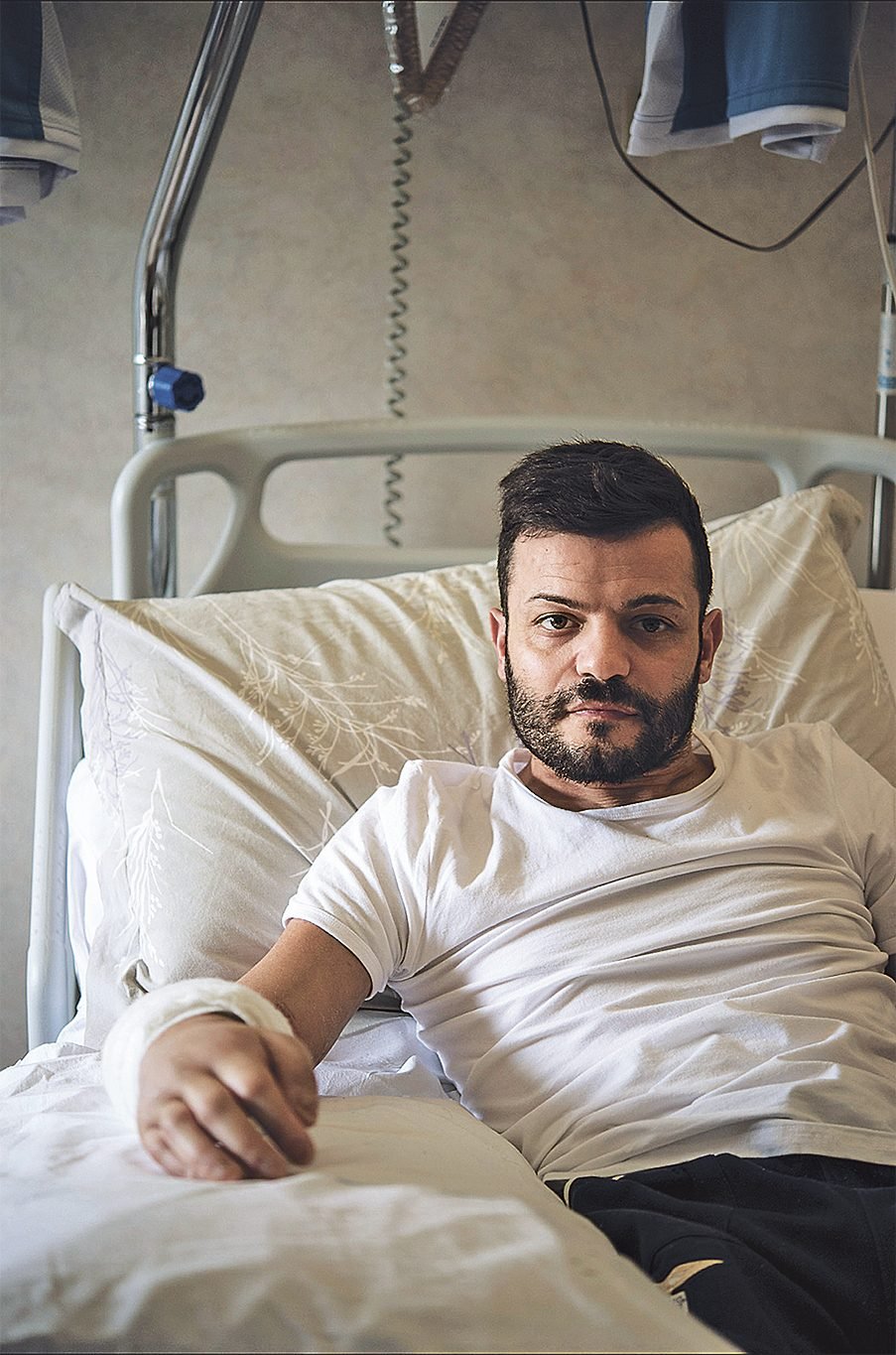
At last, at around six in the morning, Di Quinzio’s saw broke through a final thick layer of insulation. He pointed his light toward the opening and spotted Matrone’s back. Di Quinzio could see how the angled beams had created a cocoon that prevented Matrone from being crushed to death. Those near him had not been so lucky: squeezed in the space with him were the bodies of two women—one supporting his head, one curled beneath his left leg.
Rescuers raised the concrete beams off Matrone’s limbs with a hydraulic jack. “You are a superhero,” Di Quinzio said as he reached beneath Matrone’s armpits and gently lifted him out of his tomb.
The rescuers placed him on a mattress. Matrone gazed up at a dozen faces silhouetted by the light of their headlamps. A cheer went up in the small crowd: “Bravo!” He was one of 11 people out of 40 to have survived. Soon after, he was airlifted to a hospital in a nearby town.
Gangrene had begun to burrow deep into his right arm. The nerves in his right ankle had practically been destroyed. Had he been pulled out even two hours later, Matrone was told, his arm would certainly have been lost.
Five days after his rescue, Matrone was given the heartrending news that his wife had died. Her body had been found, crushed by debris, near where Matrone had been trapped. The angel who had appeared to him in his fitful dreams had never left his side.
Next, check out our collection of the most gripping survival stories.
GQ (July 2017), Copyright © 2017 by Joshua Hammer, gq.com.



